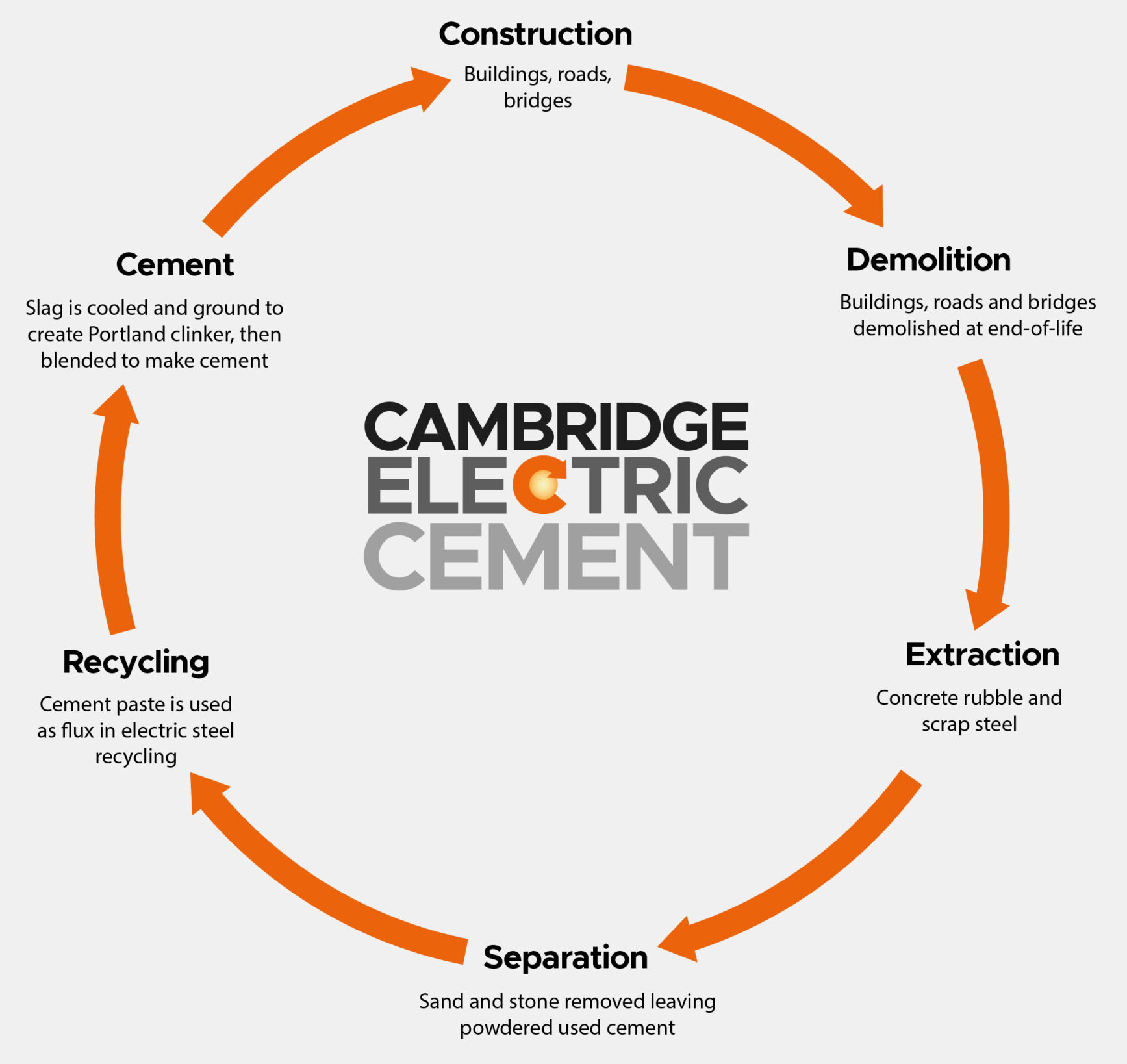Sources: Materials Processing Institute, Middlesbrough, U.K.; CP staff
The United Kingdom’s Materials Processing Institute is testing the potential of converting finely graded, demolition concrete-extracted cement paste to new cementitious material using scrap steel melted by an electric arc furnace. Dubbed Cement 2 Zero and proceeding with a $7 million-plus UK Research and Innovation grant, it could prove the Cambridge Electric Cement process at commercial scale.

Cambridge University researcher Dr. Cyrille Dunant pinpointed the chemistry at the heart of the process, noting strong similarities between ground cement paste and lime-flux used in conventional steel recycling. As scrap melts, the flux forms a floating slag, protecting the liquid steel from ambient oxygen. Once the steel material is transferred, the liquid slag is rapidly cooled, ready for grinding to a powder with chemical and binding characteristics mirroring portland cement.
“By combining steel and cement recycling in a single process powered by renewable electricity, we could supplement the supply of basic construction materials to support the infrastructure of a zero emissions world and enable economic development where it is most needed,” observes Cambridge Professor Julian Allwood.
Assisting the Cement 2 Zero project with engineering, test equipment and field demonstrations are the U.K. offices of Atkins and Balfour Beatty; Celsa Steel, the country’s largest concrete reinforcing steel producer; plus aggregate and concrete producers Day Group Ltd. and Tarmac.